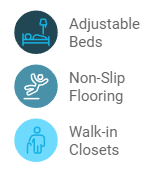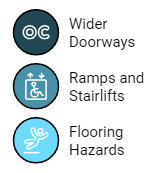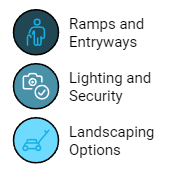Prefer to Listen to the Podcast Instead? Click Here
As we journey through life, our homes become more than just dwelling places; they transform into cherished sanctuaries filled with memories and comfort. For many seniors, the prospect of leaving their familiar surroundings can be daunting, both emotionally and financially. Aging in place, the concept of remaining in one’s home as long as safely possible, has gained significant popularity in recent years. By making thoughtful modifications to their living spaces, seniors can enhance their safety, comfort, and independence, allowing them to age gracefully in the homes they love.
The first step in creating an age-friendly home is to listen to your story — to reflect on your current needs and anticipate what challenges might arise in the future. Consider areas in your home that present difficulties. Are there tasks that have become more cumbersome? Do you foresee any health conditions that might require adjustments to your living space? Asking yourself these questions will help you identify the areas where modifications can make the most significant impact.
Once you have a clear understanding of your needs, you can begin setting realistic goals. It’s important to prioritize modifications based on your individual circumstances and resources. Some changes, such as adding grab bars or improving lighting, can be implemented relatively quickly and inexpensively. Others, like bathroom renovations or installing a stairlift, may require more planning and investment. Consulting with healthcare professionals and Certified Aging-in-Place Specialists (CAPS) can provide valuable insights and personalized recommendations to guide your decision-making.
Aging in place modifications can be made throughout the home, focusing on areas where safety and accessibility are paramount. Here are some key areas to consider:




Aging in place modifications can be further personalized to address specific health conditions that may affect seniors:
Technology plays an increasingly important role in aging in place, offering a wide range of solutions to enhance safety, comfort, and independence:
Investing in aging in place modifications offers a significant return on investment, encompassing financial, emotional, and social benefits:
Embarking on a home modification project requires careful planning and consideration of financial resources:
Working with qualified professionals and contractors is crucial for ensuring that modifications are safe, effective, and meet building codes:
Aging in place allows seniors to remain in the homes they love, surrounded by cherished memories and a sense of familiarity. By making thoughtful modifications and embracing technology, seniors can enhance their safety, comfort, and independence, creating a supportive and nurturing environment for their golden years. Taking a proactive approach to planning and implementing these changes can transform a house into a true home for a lifetime.
Send Us An Email